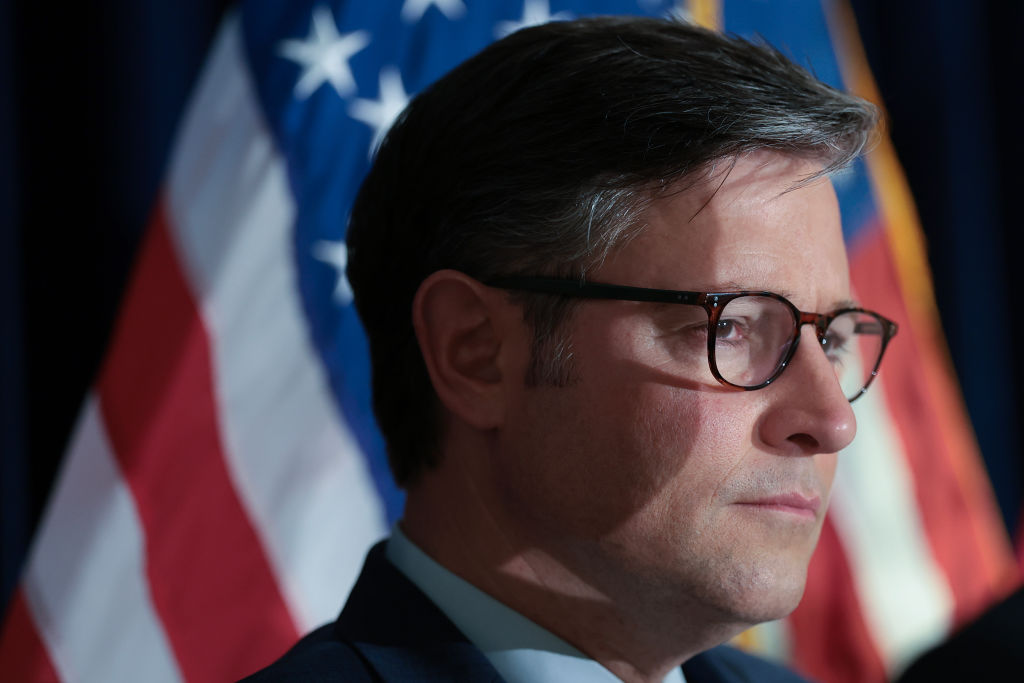Welcome to government funding week. House and Senate appropriators released a 49-page continuing resolution on Sunday that will keep federal agencies open through Dec. 20. We scooped the details for you early, although it had been clear for days where this was going to end up. Now we’ll get into what it all means.
Here’s Speaker Mike Johnson’s “Dear Colleague” letter on the bipartisan bill. Johnson says that while the “very narrow, bare-bones” CR is “not the solution any of us prefer, it is the most prudent path forward under the present circumstances.” Johnson added that a shutdown right now “would be an act of political malpractice.”
This is true. But now the last big vote that House Republicans take before heading home will be on a funding package that former President Donald Trump has opposed because it doesn’t include the SAVE Act, which requires voters to prove they’re U.S. citizens before registering for a federal election. That’s the closing House GOP message. Which perfectly sums up the 118th Congress.
In addition to extending the shutdown deadline for nearly three months, there’s $231 million in new money for the embattled Secret Service, which is still reeling following two assassination attempts against Trump.
And there are also tens of millions of dollars in additional funding for the presidential inauguration and to help out the transition period for whoever will be the commander in chief.
But there are some omissions that Democrats don’t love. There’s no disaster aid, and there’s no new money for the Department of Veterans Affairs. The VA got some new funding recently yet still wants another $12 billion. Democrats had pushed for both and received neither.
The House GOP leadership has added the bill to the Rules Committee’s Monday afternoon agenda. We’ll be interested to see if they can get it out of Rules given that the panel includes several hardline conservative Republicans. House GOP leaders could fall back on passing the bill under suspension, which would require a two-thirds majority on the House floor. Either way, they’ll need a lot of Democratic help.
Once it passes the House — and it will — the Senate will take up the stopgap funding package. How long will the Senate take? Conservative Republicans could drag out the process for a while seeking votes on the SAVE Act or spending cuts, but everyone knows what the final outcome will be here. Lawmakers want to go home and campaign for reelection. So count on some Senate magic and don’t get bogged down on procedural silliness. The CR will pass. The federal government won’t shut down. Breathe. Heads up, eyes downfield.
Now let’s talk about the big picture.
While the November elections will have a huge impact on the final FY2025 package — we could see a change in control for the House, Senate and White House — the basic outlines are already clear. It’ll be the Fiscal Responsibility Act funding levels plus the agreement worked out by Johnson and Senate Majority Leader Chuck Schumer earlier this year. Maybe some more money for both the Pentagon and domestic spending will be added on. House Republicans have wanted to get out of the deal since former Speaker Kevin McCarthy and President Joe Biden signed onto it last year. It cost McCarthy his job. Now we’ll see what happens to Johnson.
Will there be an omnibus? Probably. Will it include more Pentagon funding or Ukraine money? Maybe. Francis Scott Key Bridge help? Maybe. Other odds and ends, including disaster aid and VA money? Certainly.
Congress also will have to deal with the must-pass annual defense authorization bill and the expiring farm bill during the lame-duck session, as well as some new Cabinet nominations. There will be lots to do.
On Johnson. Johnson and House Appropriations Committee Chair Tom Cole (R-Okla.) had a weak hand in this government funding fight and they didn’t play it particularly well. Johnson and Cole wanted Democrats to negotiate, but House Republicans had nothing to move them off their starting point.
Johnson made his move — a six-month stopgap funding bill with the SAVE Act attached — and couldn’t get his conference to follow him. Johnson’s problem was every time he pushed in one place — say a six-month CR to win over conservatives — he lost votes somewhere else (see defense hawks.) The SAVE Act hasn’t been the political hammer that Johnson or Trump hoped it would be.
Thus Johnson ends up with little here. Not empty handed but close. And he’ll be negotiating a spending deal during a lame-duck session held in what’s certain to be a highly polarized post-election period with his own political future on the line.





